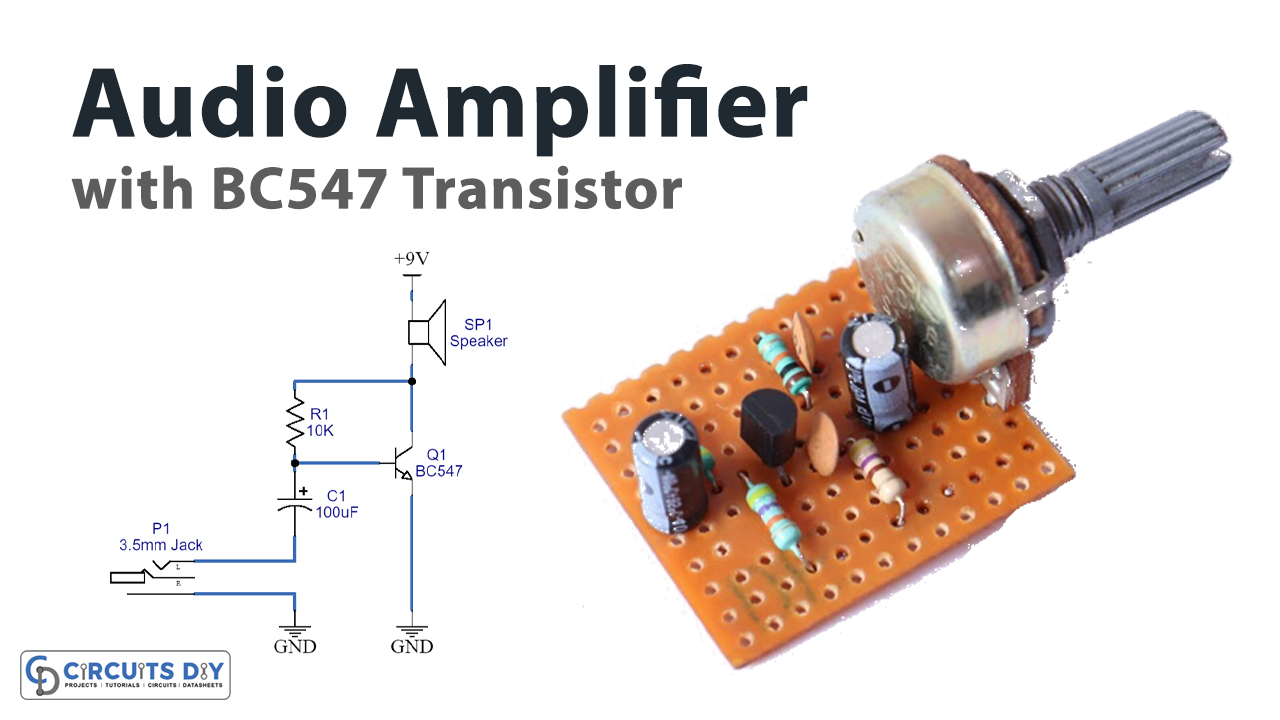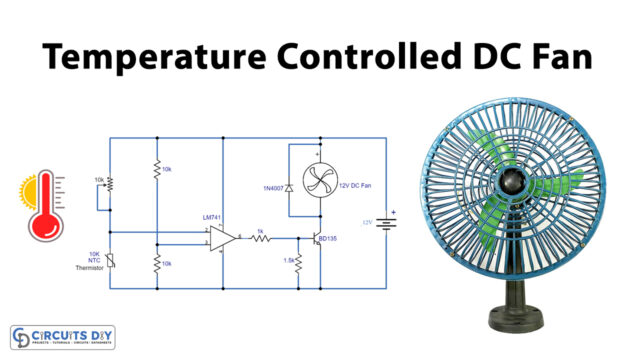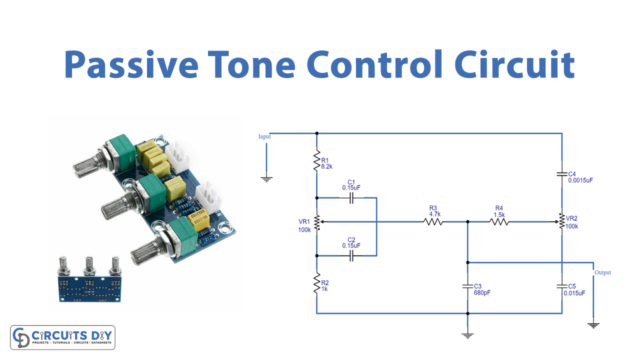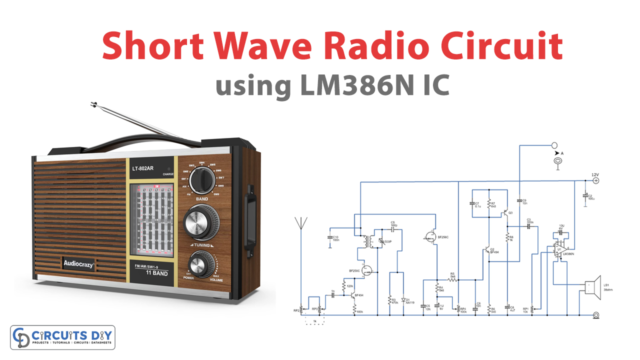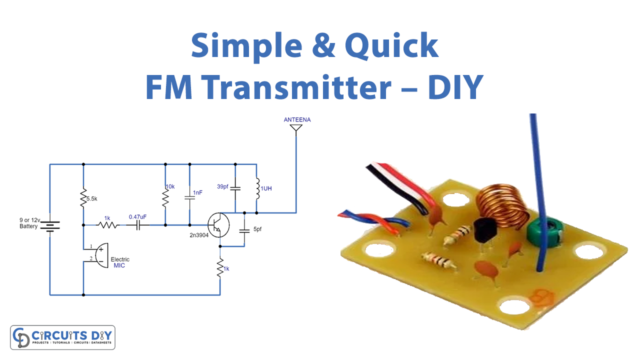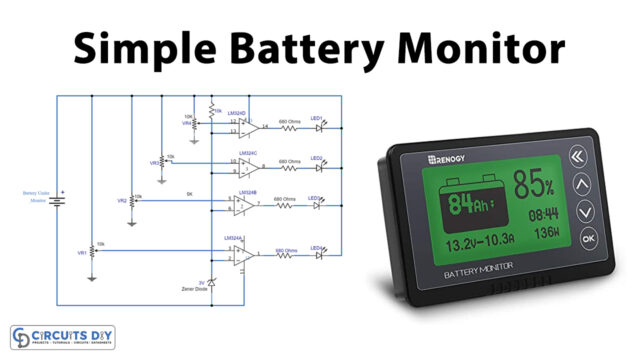Introduction
Public addressing events and theatrical performances use a mic and speaker, as it is a necessary part of any public event. In some events, mics are used to amplify the human audio while in some events, speakers just play music from any music player or mobile phone. The systems have amplifiers in them which increase the audio signals coming from any device. In other words, amplifiers boost the low-power input electronic audio signals at the output that we will see by making this amplifier circuit in this article. So, in this tutorial, we are going to make a “Simple Basic audio amplifier with BC547 Transistor”
In different and easy words, Audio amplifiers are circuits that transform low-power input audio signals into high-power audio signals at the output. The purpose of the audio amplifier circuits is to provide a distortion-free, effective, and low-noise audio signal with higher amplitude at the output side. Thus different devices use different kinds of audio amplifiers according to their requirement and need.
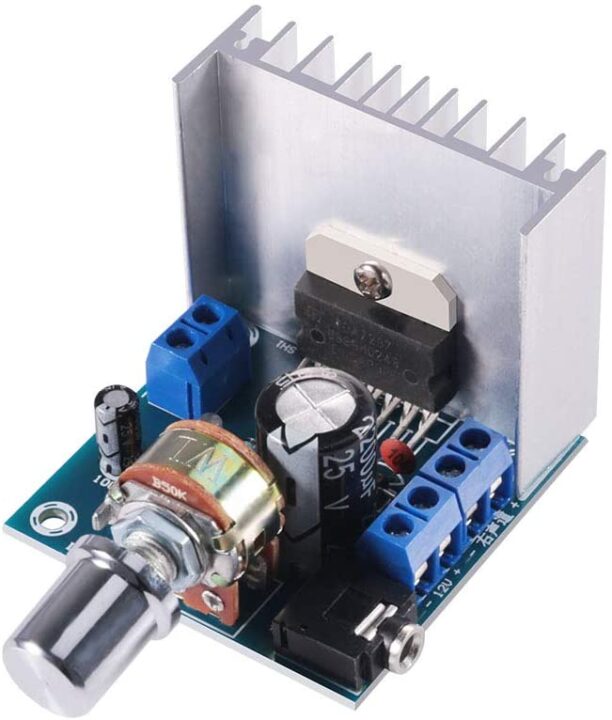
Hardware Components
The following components are required to make an Audio amplifier Circuit
| S.no | Component | Value | Qty |
|---|---|---|---|
| 1. | Transistor | BC547 | 1 |
| 2. | Loud Speaker | – | 1 |
| 3. | Headphone jack | 3.5MM | 1 |
| 4. | Resistor | 10k | 1 |
| 5. | Capacitor | 100uf | 1 |
BC547 Pinout

For a detailed description of pinout, dimension features, and specifications download the datasheet of BC547
Audio amplifier Circuit
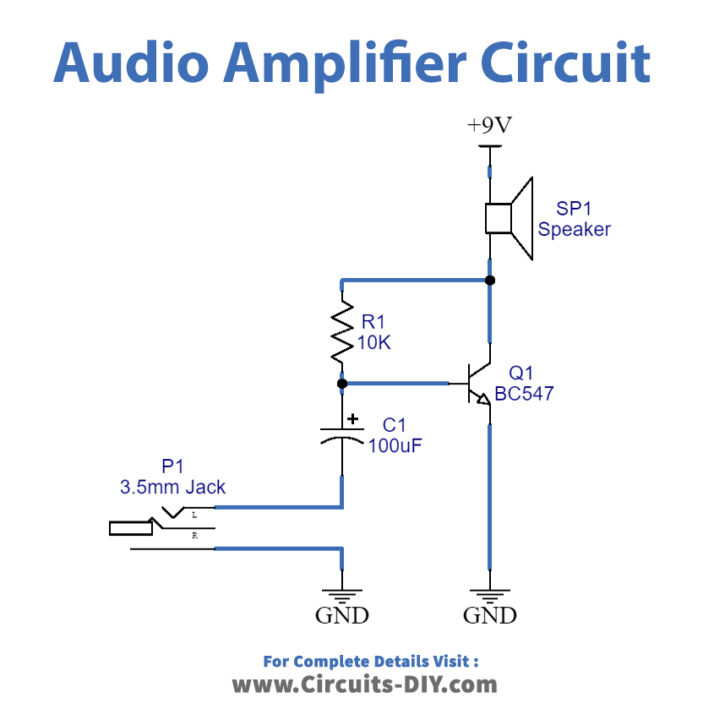
Working Explanation
This simple basic audio amplifier circuit first receives a low input audio input signal of any kind with the help of a 3.5mm Jack. This audio signal is then given to the base of the transistor through the 100uf capacitor. The capacitor triggers the NPN transistor therefore the transistor starts operating. The transistor magnifies the audio signal. The transistor is wired in a common emitter configuration. Therefore emitter is grounded and output is taken at the collector. Hence, the speaker is connected to the collector. High output audio signal is observed at the output. A resistor is there to manage the sound quality at the output.
Application and Uses
- In audio electronic devices like guitars, electronic keyboards, etc.
- In children’s toys.


